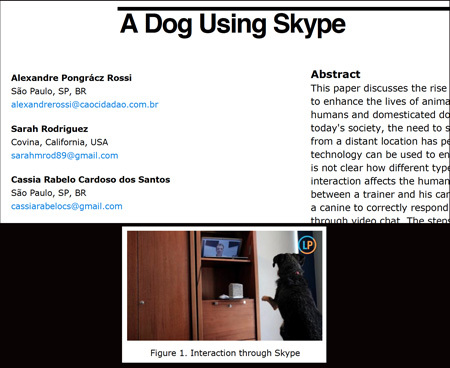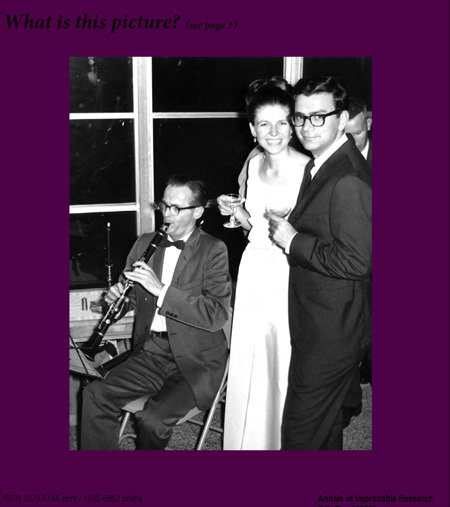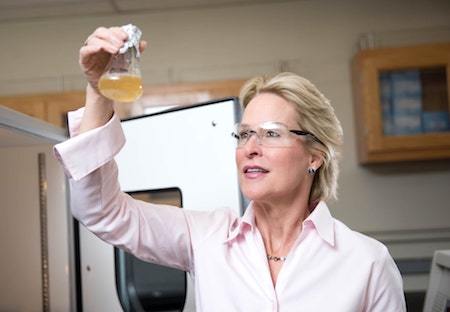Marc Abrahams's Blog, page 170
October 12, 2018
A Dog Using Skype [research study]
Technology is not just for humans, suggests this study that uses a dog using Skype to try to make that point, or to make some other point:
“A Dog Using Skype,” Alexandre Pongrácz Rossi, Sarah Rodriguez, and Cassia Rabelo Cardoso dos Santos, Proceedings of the Third International Conference on Animal-Computer Interaction, ACM, 2016, p. 10. The authors explain:
“As the bond between humans and domesticated dogs grows in importance in today’s society, the need to stay connected to pets from a distant location has peaked inquiries into how technology can be used to enhance that bond. While it is not clear how different types of technology mediated interaction affects the human – dog bond, recent work between a trainer and his canine displayed the ability of a canine to correctly respond to verbal cues given through video chat. The steps to achieve this will be explored, and the benefits of such an interaction will be discussed.”

October 11, 2018
Reinventing the chopstick(s) [new patent]
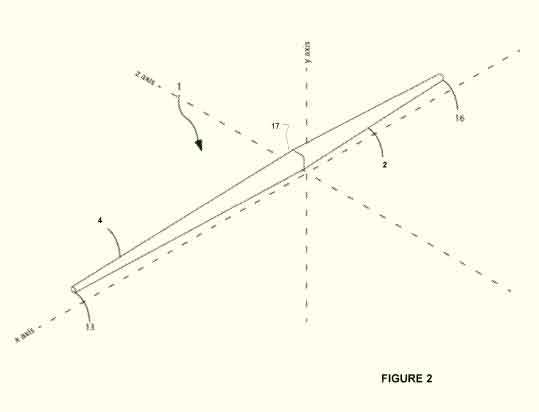 Sometimes, the simplest technology can be the hardest to improve upon. Nevertheless, inventor Dang Minh Tran of San Diego California has re-invented the chopstick(s) :
Sometimes, the simplest technology can be the hardest to improve upon. Nevertheless, inventor Dang Minh Tran of San Diego California has re-invented the chopstick(s) :
“A pair of chopsticks are commonly used as eating utensils. Each chopstick commonly has two sections, one section for picking up food that can be referred to as an eating section and the other end for holding by a user that can be referred to as a handling section. In use the section for picking up food, also the chopstick eating section, may become covered with bits of food or sauce. When not in use, chopsticks may be placed flat on a horizontal surface, such as a tabletop commonly causing an area of the chopstick eating section to contact the horizontal surface. To avoid contaminating a chopstick eating section or a selected horizontal resting surface area (i.e. table), a user may rest or lean the chopsticks on a chopstick rest or other item to prevent undesired eating section contamination. It may be inconvenient and wasteful to employ a separate object to rest a chopstick. The present invention eliminates the need for a separate rest object.”
See: United States Patent 10,058,202, August 28, 2018, Self-elevating chopsticks
[ Research Research by Martin Gardiner ]

Tom and Joan Steitz, and a clarinet player
Tom Steitz has died; his obituary is in New York Times. He was half of a marriage of two great and celebrated chemists, who met while they were grad students of the great and celebrated Professor Lipscomb, whom many of you saw and met at two decades of Ig Nobel Prize ceremonies. (We met at a memorial for Bill Lipscomb, in 2011.)
Tom and Joan are the glamorous mystery couple featured on the back cover of the special Professor Lipscomb issue (vol. 17, no. 4, 2011) of the Annals of Improbable Research., along with a clarinet player named William Lipscomb.
The Times obituary says:
Thomas A. Steitz, a towering figure of late-20th-century science who shared a Nobel Prize in Chemistry for figuring out the structure of a huge molecule central to translating the genetic code into the proteins that make up living matter, died on Tuesday at his home in Branford, Conn. He was 78….
…he went to Harvard for graduate school. Dr. Steitz decided then and there to become an X-ray crystallographer. He joined a group led by William N. Lipscomb, the only scientist at Harvard using that technique. Dr. Lipscomb was awarded the chemistry Nobel Prize in 1976….
After Cambridge Dr. Steitz began a long career at Yale, which also hired his wife, Joan Argetsinger Steitz, an eminent molecular biologist and recipient this year of a prestigious Lasker special achievement award in medical science….

October 10, 2018
Perception of the chilled groceries foodscape, with and without refrigerator doors
The researchers state their worry bluntly: “The purpose of this paper is to contribute to an understanding of how consumers behave and what they perceive when shopping chilled groceries from cabinets with doors and without doors in the supermarket.”
 Sight, smell, hearing, taste, and touch are all perception tools that help aid the decision making process for buying groceries. Researchers from Sweden and Denmark decided to put these tools to the test against a formidable opponent: a transparent door. They re-state their purpose, a bit less bluntly:
Sight, smell, hearing, taste, and touch are all perception tools that help aid the decision making process for buying groceries. Researchers from Sweden and Denmark decided to put these tools to the test against a formidable opponent: a transparent door. They re-state their purpose, a bit less bluntly:
“The purpose of this paper is to contribute to an understanding of how consumers behave and what they perceive when shopping chilled groceries from cabinets with doors and without doors in the supermarket.”
Concerning olfaction some informants explained that they found most chilled groceries difficult to smell due to the packaging. “I want to
smell it.” […] “even if it’s well packaged, I think that if it’s really, really bad, I have to be able to smell something, even if it is packaged.” They also described smelling chilled groceries as awkward. If they do this, they always do it discretely as they do not want to be perceived as strange… The informants discussed that doors on cabinets can stop odors from getting into the room. However, at the same time, whenever a door is opened, the odor may cause strong reactions among the informants.
Some informants describe that doors on cabinets in general are good when it comes to making the store feel less cold. One informant describes this: “When there are doors, it feels like the cold is more isolated and being kept in its place. I like doors.”
The study in which they state these things is: “Consumer perception and behavior in the retail foodscape–A study of chilled groceries,” (2018). Lindberg, U. [pictured here], Salomonson, N., Sundström, M., & Wendin, K. Journal Of Retailing And Consumer Services, 40, 1-7.
Here’s a video of co-author Karin Wendin explaining a different line of research, centering on the eating of insects:

October 9, 2018
In search of…
Seven years ago Google went to a lot of effort and expense to film a very short documentary about how we at Improbable Research do internet searching in innovative ways.
This little documentary was going to be an ad for Google, both on TV and on the internet. And it might have introduced a LOT of people worldwide to Improbable Research.
 But Google never showed that little documentary about us — because they suddenly diverted ALL their advertising efforts to promote the then-new Google+
But Google never showed that little documentary about us — because they suddenly diverted ALL their advertising efforts to promote the then-new Google+
This week, in 2018, Google announced that they are shutting down Google+
Google says: “We are shutting down Google+ for consumers.”
Oh, well!

Celebrating Professor Arnold’s Further and Future Adventures
I have to say I feel pretty tickled (and yes, honored) by the final minute of this Science Friday interview with new Nobel Chemistry Prize winner Frances Arnold.
After hearing the interview, I of course got in touch with Professor Arnold, inviting her to take part in next year’s (2019) Ig Nobel Prize ceremony. She replied: “marc, wonderful! Can’t promise to come, since my life is a tornado and I am a leaf, but it is high on my list!”
The Nobel committee honored Professor Arnold specifically for her research on “the directed evolution of enzymes.” Many thanks to Ira Flatow and Charles Bergquist at Science Friday, for helping engineer the new bit of directed social/ceremonial evolution.

October 8, 2018
Sausage Party : a vegan critique
The 2016 movie Sausage Party may have been a box-office hit, but when it comes to inspiring scholarly articles, it’s something of a flop. There are one or two however . . .
“This article provides a critical vegan reading of the comedy animation film Sausage Party (2016), directed by Conrad Vernon and Greg Tiernan and starring Seth Rogen and Kristen Wiig. Such a reading is situated within an emerging vegan studies framework (Wright 2015) that is sensitive to the reproduction of unequal power relations between humans and other species, but also how those power inequalities intersect with intra-human power relations along the lines of gender, sexuality, ‘race,’ age, class, different experiences of embodiment and so on.”
See the Scholarly Article: ‘Speciesism Party: A Vegan Critique of Sausage Party’ in Interdisciplinary Studies in Literature and Environment, 24(4):767-786 · April 2018, by Dr Matthew Cole (Open University) and Dr Kate Stewart (Nottingham Trent University)
[ Research research by Martin Gardiner ]

October 6, 2018
Kinda Sorta Linguistic Research
 If you ever say “kinda” or “sorta”, there’s a good chance you’ve been using ‘Pragmatic Halos’ without even knowing about it. Linguistically speaking, ‘Pragmatic Halos’ can include phrases that are not strictly true (but that are neither lies or mistakes) and which are a normal part of honest, error-free discourse.
If you ever say “kinda” or “sorta”, there’s a good chance you’ve been using ‘Pragmatic Halos’ without even knowing about it. Linguistically speaking, ‘Pragmatic Halos’ can include phrases that are not strictly true (but that are neither lies or mistakes) and which are a normal part of honest, error-free discourse.
“It is a truism that people speak ‘loosely’- that is, that they often say things that we can recognize not to be true, but which come close enough to the truth for practical purposes.”
– explained Professor Peter Nathan Lasersohn (University of Illinois, Dept. of Linguistics) in a 1999 paper for the journal Language, 75 (3): pp.522-551 which carried the first account of ‘Pragmatic Halos’ and their everyday uses.
For a more recent and specific examination of ‘kinda’ and ‘sorta’ – in the Lasersohnian sense, see: Inherent and coerced gradability across categories: manipulating pragmatic halos with sorta, Curt Anderson, Proceedings of SALT 23. (2013)
If, however, you’d like a less colloquial approach, looking at ‘kind of’ and ‘sort of’ instead of ‘kinda’ and ‘sorta’, then see : This is kind of / sort of interesting: variation in hedging in English, Stefan Th. Gries, and Caroline V. David, Towards multimedia in corpus linguistics, 2007.
[ Research research by Martin Gardiner ]

October 3, 2018
Olympic Gold Medalists Die Earlier (than Silver Medalists) [new study]
When it comes to Gold and Silver medalists in Olympic Track and Field events between 1896 and 1948, then :
“Contrary to conventional wisdom, winners die over one year earlier than losers.”
 That’s the result of a new research project conducted by Professor Adam Leive of the Batten School of Leadership & Public Policy, University of Virginia. Why should this be? Perhaps “fame may induce risky lifestyle decisions”? Or maybe “income earned later in life may partly explain the earlier deaths”? These, and others, are questions that are still to be resolved – bearing in mind that :
That’s the result of a new research project conducted by Professor Adam Leive of the Batten School of Leadership & Public Policy, University of Virginia. Why should this be? Perhaps “fame may induce risky lifestyle decisions”? Or maybe “income earned later in life may partly explain the earlier deaths”? These, and others, are questions that are still to be resolved – bearing in mind that :
“Disentangling the relationship between achievement and health is challenging because several channels may operate simultaneously.”
See: Dying to Win? Olympic Gold Medals and Longevity Journal of Health Economics, Available online 6 August 2018. A full, free of charge, copy may be found here.
Also see: This research from 1995 which found that “bronze medalists tend to be happier than silver medalists”
Further reading: More information about ‘Close Counterfactuals’ : “Close Counterfactuals are alternatives to reality that almost happened.” From Daniel Kahneman and Carol A. Varey University of California, Berkeley, 1990.
[ Research research by Martin Gardiner ]

October 2, 2018
Professor(?) Richard Lynn – a profile
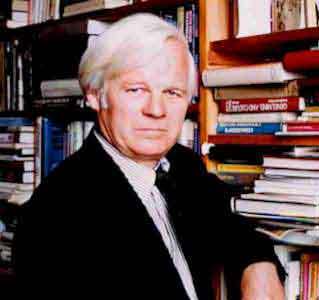 Those who have been watching the scholarly career of Richard Lynn, Professor Emeritus, at the University of Ulster [Note: See item 2 below], there are two recently published items which might be of interest.
Those who have been watching the scholarly career of Richard Lynn, Professor Emeritus, at the University of Ulster [Note: See item 2 below], there are two recently published items which might be of interest.
The first, [1], is a new paper published in the journal Personality and Individual Differences, November 2018, Pages 275-277 (written along with Mingrui Wang, of the Beijing University of Agriculture, China) it’s entitled ‘Intelligence in the People’s Republic of China’. The study suggests that Chinese students, when tested on the The Chinese Combined Raven’s Test, appear to be (very rapidly) becoming more intelligent – (if you accept that IQ tests are a measure of intelligence).
“The IQ of the samples increased by 15.0 IQ points a decade over 18-year period”
The second item, [2], of interest is that, according to the BBC, Richard Lynn, is no longer Professor Emeritus, at the University of Ulster – quoting a university spokesperson as having said :
“Ulster University has withdrawn the emeritus title from Professor Richard Lynn and notified the individual accordingly,”
“Professor Richard Lynn does not work for Ulster University nor does he contribute to our research and teaching.”
Below are some more examples of his publications [ Note: Some of the subject matter of the studies, and the conclusions which are drawn, may not be 100% inoffensive for all readers ]
Lynn, R. (2012) An examination of Rushton’s theory of differences in penis length and circumference and r-K life history theory in 113 populations. Personality and Individual Differences
Lynn, R (2004) The intelligence of American Jews Personality and Individual Differences, Volume 36, Issue 1, Pages 201-206
Lynn, R (1999) Sex differences in intelligence and brain size: a developmental theory. Intelligence, 27,1-12.
Lynn, R. (2002) Skin color and intelligence in African Americans. Population and Environment, 23, 365-375.
Many more can be found here

Marc Abrahams's Blog
- Marc Abrahams's profile
- 14 followers


